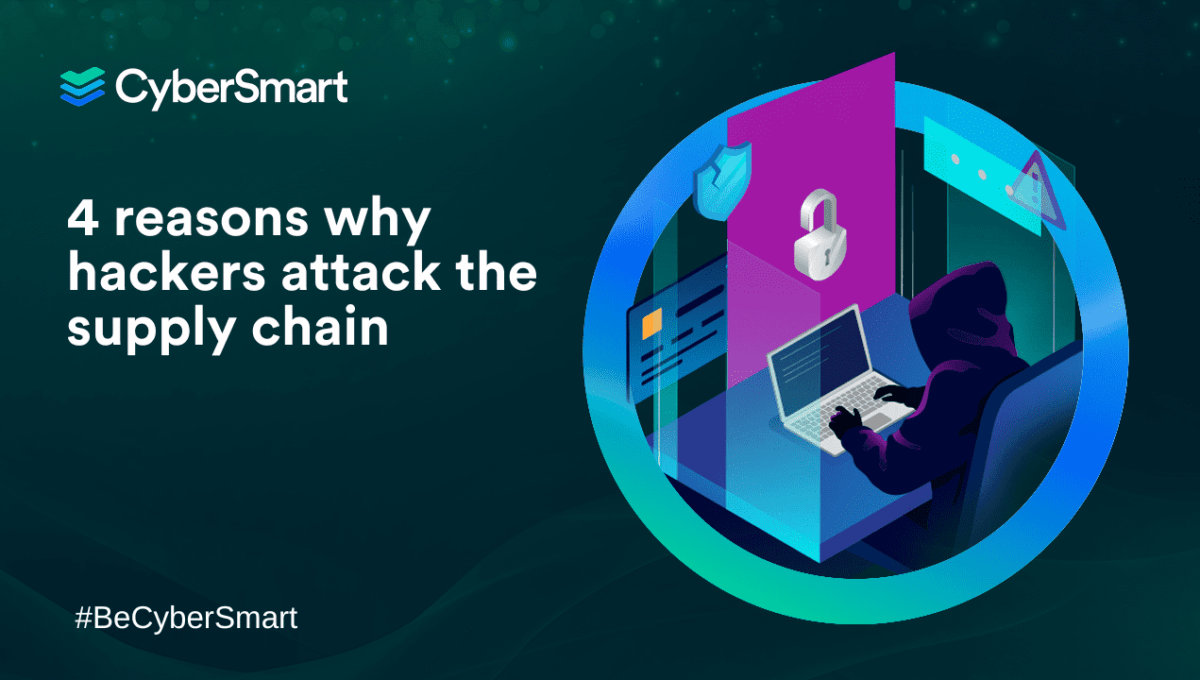You’re a hacker ready to launch an attack. What do you target?
- A: A single person or company that’ll get you a sizeable reward, if the attack is successful?
- B: A supply chain that could get you access to hundreds, if not thousands, of companies and their data, if the attack is successful?
Supply chain attacks increased 633%, by 88,000 instances, in 2022. And it’s easy to see why.
With this increased risk, it’s good to understand what supply chain hacks are, why they happen, and how to protect your business from them as much as possible.
What are supply chain hacks?
A supply chain hack is a type of cyberattack that targets organisations by exploiting weak links in third-party software, hardware, or services. In these cases, you could have very strong cybersecurity defences but suffer an attack because a supplier’s software has a vulnerability they weren’t aware of. Hackers use this to access your networks and data undetected and cause damage.
Because these attacks are through legitimate supplier software/hardware, they can be more difficult to spot and stop. In the high-profile SolarWinds attack, it took months for professionals to understand how cyber criminals were gaining unauthorised access to networks and data.
Why hackers attack supply chains
1. Collateral damage
By accessing a company that provides software or services to other companies, hackers can harm multiple targets in one hit. Instead of putting effort into attacking one company, they could potentially impact hundreds, if not thousands. Take the recent Otka attack as an example. Otka has 14,000 customers, and in one five-day attack, hackers impacted 366 of them.
This kind of attack doesn’t just cause immediate damage like data loss. It also causes long-term reputational challenges for suppliers. As supply chains rely on trust, customers lose confidence in their suppliers’ abilities to protect themselves, and therefore their customers, from cyber threats.
2. Kudos
Hacking is a skill – albeit a dangerous one in the wrong hands. And hackers have egos. If one can successfully infiltrate supply chains, access customer data, install malware, etc., on a large scale and cause widespread damage, they can brag about it. The bigger the attack, the better.
3. Financial gain
A supply chain is a perfect place for a hacker to compromise cash flow and payment systems between multiple companies to gain access to sensitive financial information. They can divert payments, demand ransom, and leak/sell sensitive data on a large scale. The more money they can make, the more worthwhile the hack is.
4. Disruption and theft
As is the case with other types of cyberattacks, supply chain hacks cause a lot of disruption. Because so much data is available for exploitation in supply chains, cybercriminals attack them to get hold of vast amounts of personal data, intellectual property, and confidential business information. This…
- severely disrupts and even stops operations
- causes financial losses
- damages trust
- injures brand reputation
Safeguard your business against supply chain hacks
Few companies take steps to formally review risks in their supply chains – around one in ten businesses review the risks posed by their immediate (13%) and wider suppliers (7%).
You need to work with suppliers and feel confident that they work to the same high standards as you. Supply chain attacks pose a very real threat, but don’t let it get to you.
There are some simple and affordable ways to give yourself (and make sure your suppliers have) a good amount of protection against threats.
One way is to get a Cyber Essentials certification. This is a government-backed scheme to help businesses protect themselves in five core areas:
- Secure configuration
- Malware protection
- Network firewalls
- User access controls
- Security update management
Applying the five principles to how you work can reduce your cyber risk by 98.5% and give you the confidence and understanding you need to speak to your suppliers about their security practices.
Want to know more about the threat posed by supply chain attacks and learn how to protect your business? Check out our new guide for everything you need to know.

